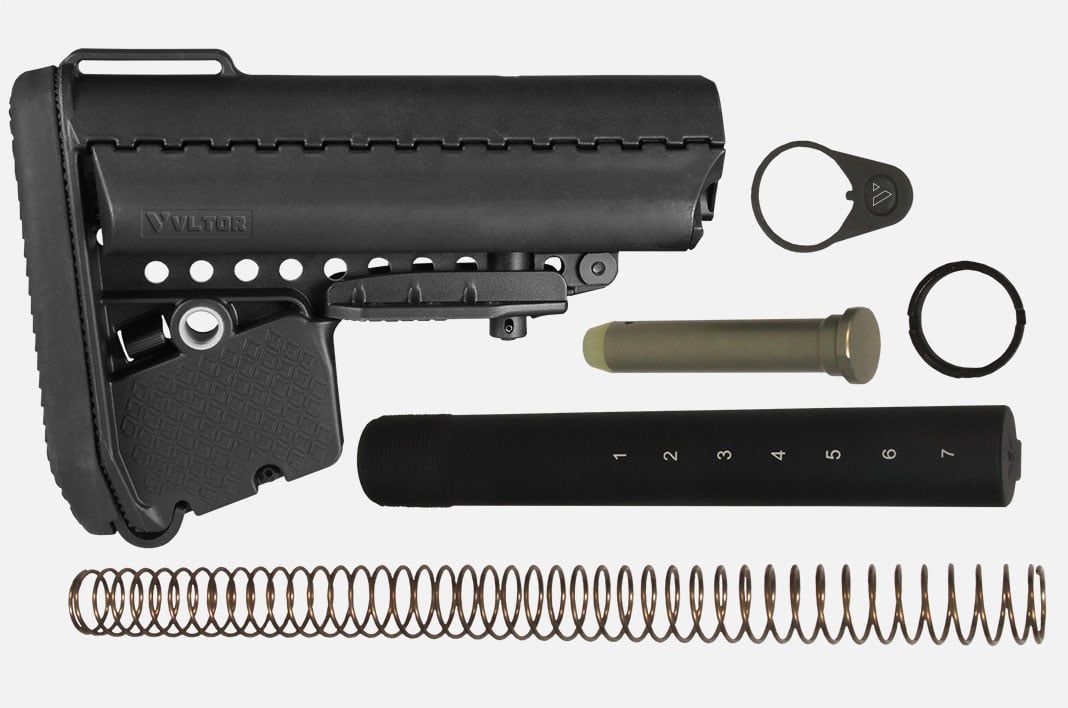
During the course of a recent interview with a highly respected AR manufacturer, he mentioned the VLTOR A5 Buffer System as one of the “single most legitimate upgrades” the AR has ever seen. This was not the first time we’d heard such a claim.
Such repeated high praise led us to reach out to Nick Wantland, head of marketing and sales at VLTOR. We asked for an overview of the A5 System and why it might be something to consider as you put together your next AR build.
Q: Nick, the VLTOR A5 Buffer System is something that I keep hearing about and I wanted to go straight to the source. Can you give us the background and details about this potential upgrade for our AR builds?
Nick Wantland: The VLTOR A5 Buffer System is my favorite thing that we make, and is one of the things that I get most excited about when I talk to people about VLTOR and what we offer.
We make some other really cool stuff, so it’s sort of funny that an unsexy part like a buffer would be my favorite. But when you dig into the technical side of things, its attractiveness becomes clear.
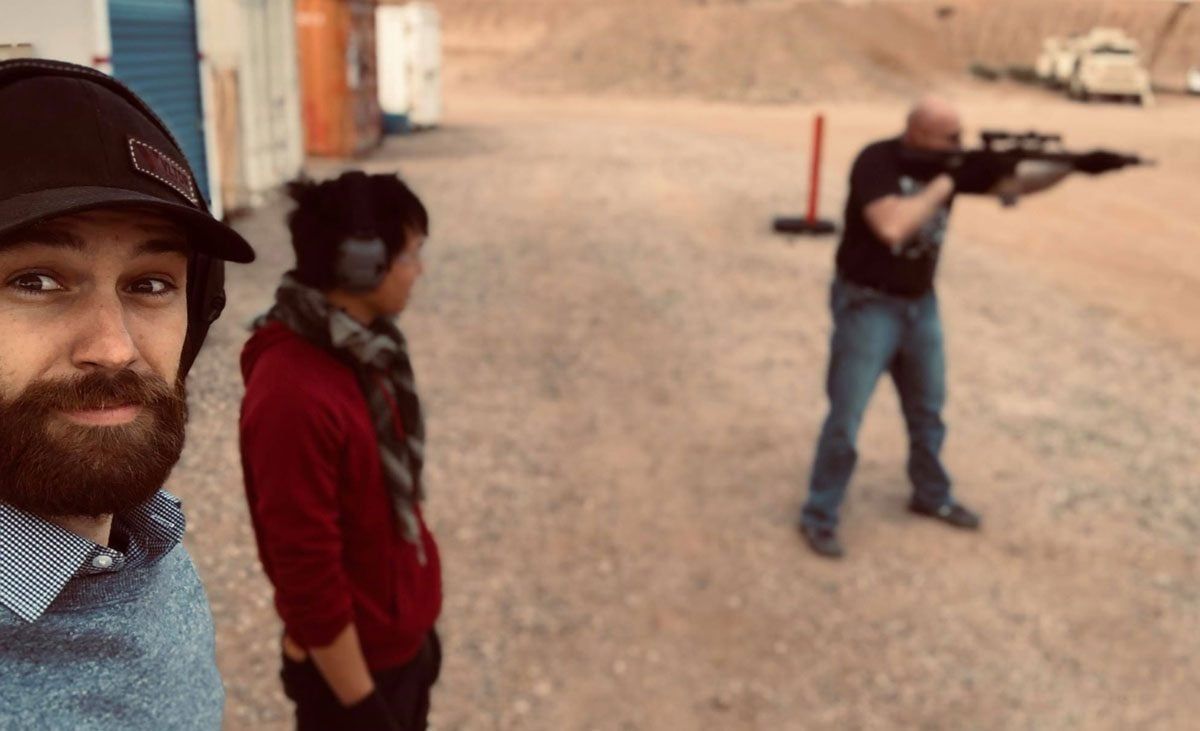
The VLTOR A5 Buffer System is basically a proprietary buffer and receiver extension tube that are intermediate in length. The buffer and the tube are both 3/4 of an inch longer than a standard carbine buffer set up. The system also utilizes a rifle action spring instead of a carbine spring.
Opening the Envelope
There’s a ton of things that it does simultaneously, some more nuanced than others…But the synopsis is it regulates carrier velocity, changes felt recoil impulse, and most importantly, it opens up the entire operational envelope of the gun. It allows the gun to run properly under a much wider range of input and factors. This usually equates to more overall reliability…which is a good thing.
Q: Let’s start at the beginning, how did the VLTOR A5 Buffer System come about?
Nick Wantland: Years ago, the Marine Corps was looking at ways to deal with the ergonomic and length-of-pull issues they were having with the fixed stocks on their M16A4s. The fixed stock was designed long ago before the introduction of thick, modern body armor. Depending on the Marine’s body type, and what style optic they were using, the lack of adjustability in the stock length was causing tons of ergonomic, mobility, and eye relief issues.
To compensate for this, a lot of guys were having to hike the fixed stock way up on their shoulder. Basically until only the toe of the buttpad was resting high on the shoulder… “out of pocket”, as they say. This shooting stance causes lots of issues with accuracy, and with the mechanical functionality of the gun.
“Retain the reliability and beneficial characteristics of the full length rifle buffer system”
The Marines were looking for a way to retain the reliability and beneficial characteristics of the full length rifle buffer system on their 20” guns, but they wanted to be able to use an adjustable stock. Simply popping a standard carbine stock and buffer setup on there does not work. It leads to bolt bounce, erratic cycle timing, and lots of other issues.
VLTOR had been developing something along these lines, and submitted an entire back end system to replace the M16A4’s fixed stock. It was a new proprietary buffer and extension tube, along with a rifle spring and VLTOR Emod adjustable stock. When fully collapsed, the new stock system was shorter than the M16A4’s fixed stock, and when fully extended it was longer.
So there was a lot more overall length-of-pull adjustability there, and the rifle buffer characteristics were retained…all while adding some other beneficial characteristics and cool features that were built into the new buffer system.
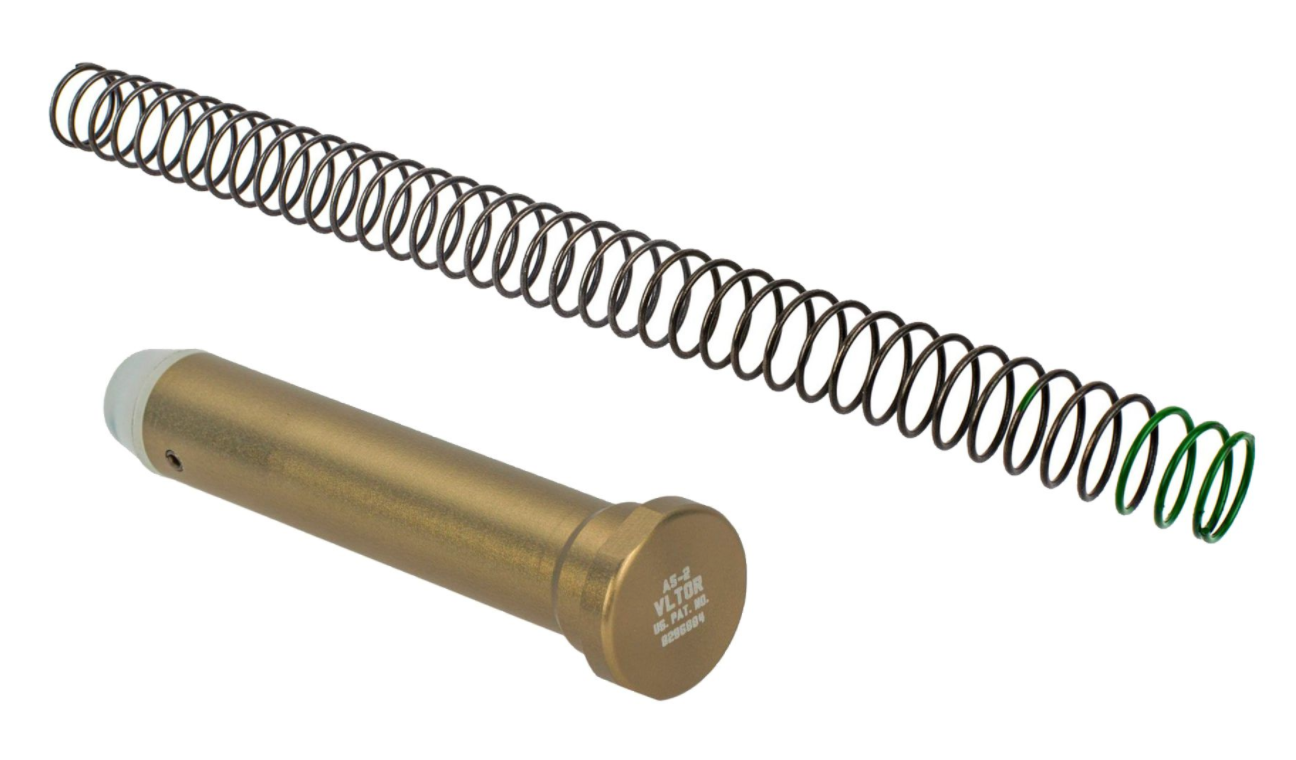
VLTOR A5 Standard Buffer & Sprinco Green Buffer Spring Kit
Q: I think I have a guess, but can you explain how the VLTOR A5 Buffer System get its name?
Nick Wantland: The original idea at the time was to get this new buffer system fielded on an upgraded platform called the M16A5 – which is where the “A5” nomenclature that we still use for the buffer system originally came from.
The military did a ton of testing on the VLTOR A5 Buffer System, and it did very well. They did some very high round count direct comparison tests against the other buffer systems. Our A5 system produced the least malfunctions, stoppages, etc. of all…even less than the original full length rifle buffer setup.
Q: Can you describe to a beginner what are the characteristics of the rifle buffer system? Smoother, more reliable?
Nick Wantland: Well, in grossly oversimplified terms, the rifle buffer system can usually be described as more “smooth, consistent, and forgiving” than the carbine buffer system. I try my best not to use buzzy words like that, but it makes perfect sense when you break it down mechanically, and historically.
When you go back through the history of the AR’s development, the carbine buffer system was basically a compromise.
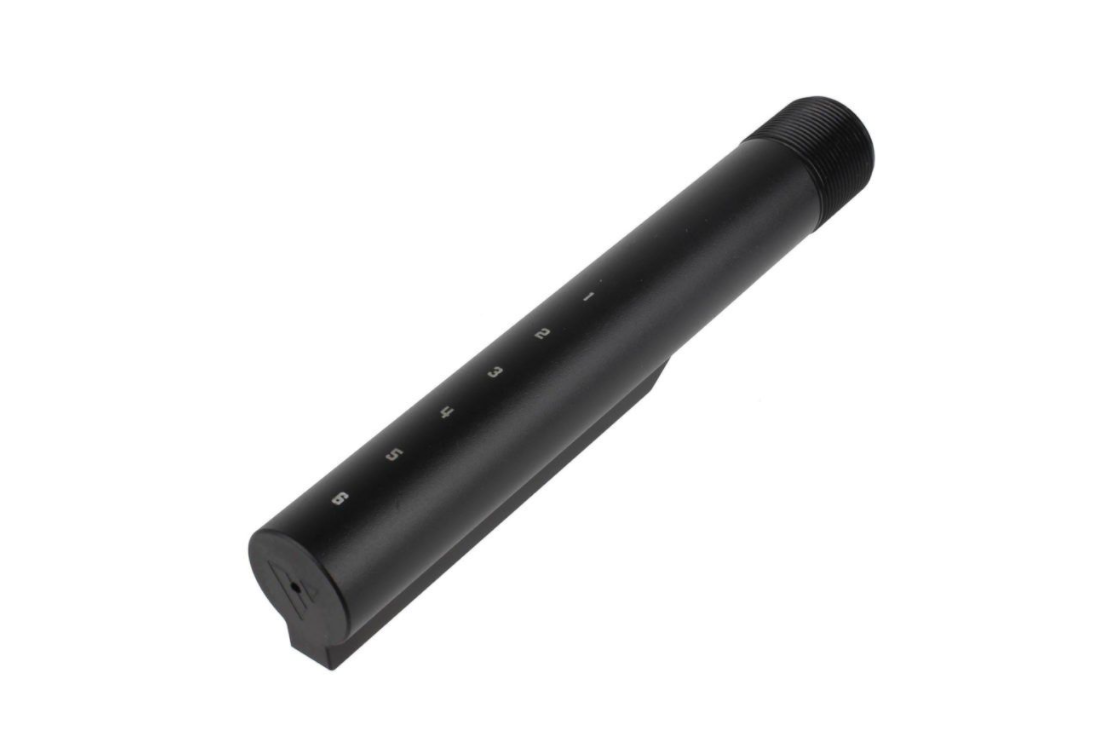
VLTOR RE-10/A5SR: A5 Receiver Extension
“more smooth and consistent than a carbine setup”
Whether you’re using the carbine buffer system, or the longer rifle buffer system, the bolt carrier’s stroke length is the same – around 3.75”. The carrier travels the same distance, so the amount of compression a carbine spring and rifle spring experience is the same.
However, the carbine spring is shorter and has less wire than a rifle buffer spring. This means with the rifle buffer system, you have a longer spring with more coils and more wire to perform the same work. When both springs are deflected the same amount, the carbine spring experiences more stress, and also experiences a higher differential between the pre-loaded position and fully-loaded positions than a rifle spring does.
There is a lot more to it than that, but in basic terms, the rifle buffer system is quite literally more smooth and consistent than a carbine setup, in regards to the action spring.
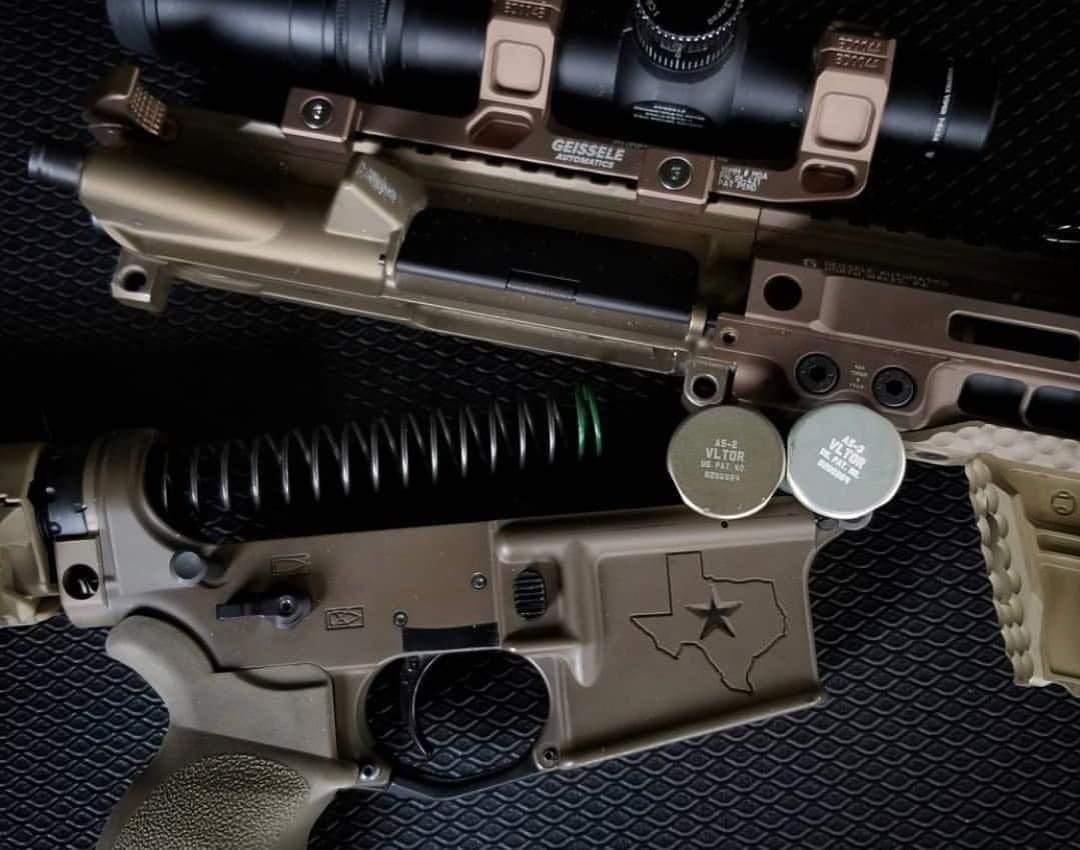
Let’s talk more about some of the different weight of buffers that can accompany the VLTOR A5 Buffer System…
Nick Wantland: Sure…the VLTOR A5 Buffer System’s buffers are physically longer than traditional carbine buffers. This allows for the utilization of four internal weights, rather than the standard three you’d see in carbine. Because of this, the A5 buffers are capable of reaching a higher overall mass than carbine buffers. And very importantly, it allows this mass to be included as uncoupled internal mass. Including the mass inside the buffer as uncoupled weight achieves an entirely different thing than making the outside body of the buffer itself heavier. The extra uncoupled mass inside of the A5 buffer is part of what makes it so effective at eliminating bolt bounce.
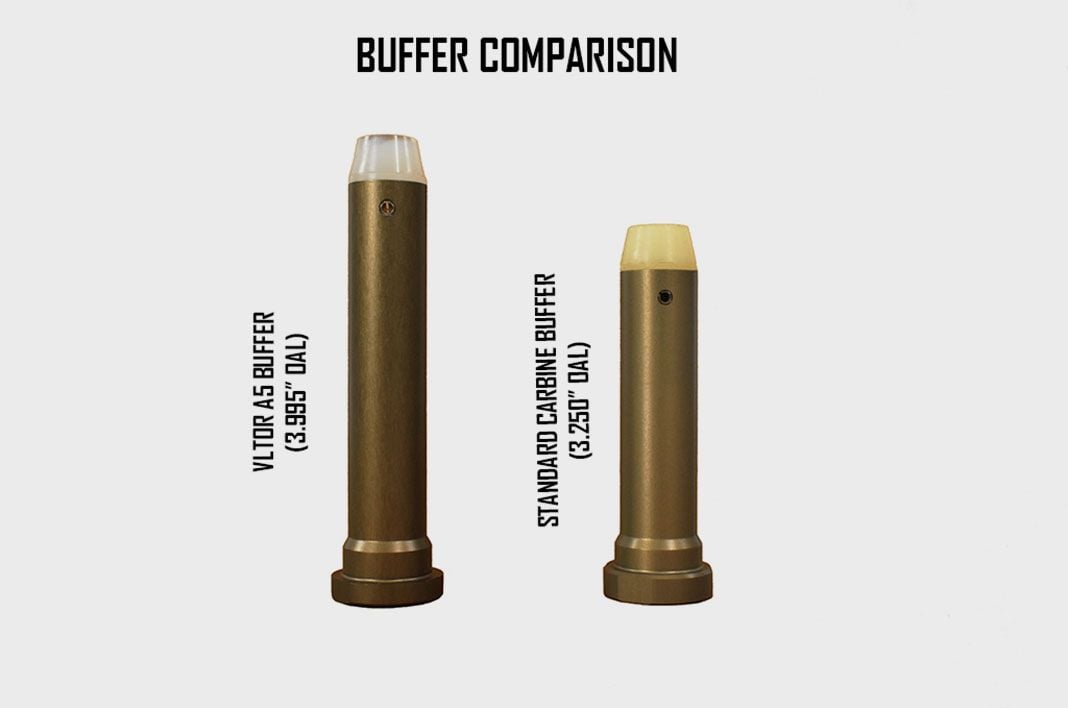
A5 Buffer Varieties
The A5 buffers range from A5H0 to A5H4 – a total range of 3.80 oz. to 6.83 oz. The number suffix corresponds to how many of the four internal weights inside are tungsten. For example, the A5H0 has four standard steel weights and no tungsten, while the A5H2 has two steel and two tungsten. The tungsten is extremely dense and heavy, so there’s a significant mass increase.
The standard, middle-of-the-road buffer is the A5H2. That’s the one we include in all of our various VLTOR A5 Buffer System kits. The standard A5H2 and rifle spring is appropriate for a very large percentage of the build configurations out there.
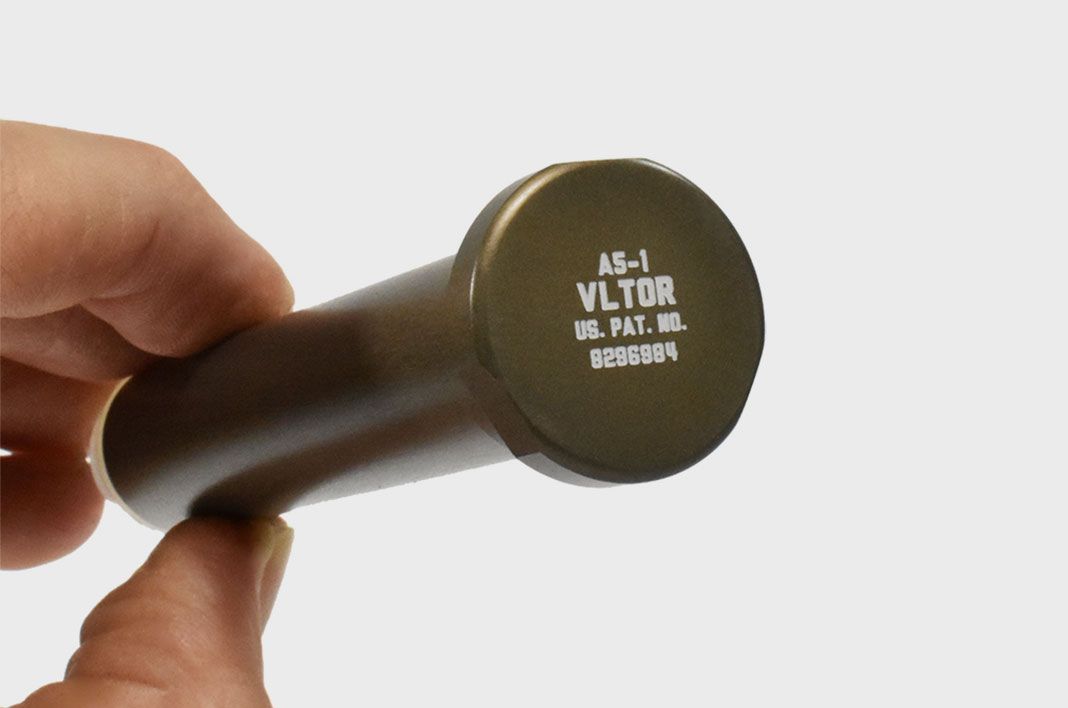
The two buffers under that, the A5H0 and A5H1 are great for things like soft-ported 14.5” mid-lengths, competition guns with heavily tuned gas, or any other guns that would be over-buffered or have some loss in functionality with the standard A5H2. And by loss of functionality I mean short stroking, failure to lock back on empty, things like that.
Heavier Buffers
Then the heavier buffers, the A5H3 and A5H4, are appropriate for short barreled builds, over-gassed guns, suppressed applications, and that sort of thing. For example, a lot of the SWAT guns we build have 11.5” barrels. Most of those guns are running A5H3 buffers, and they have excellent functionality both with and without their suppressors attached. The opened operational envelope that the A5 system provides makes it so that the added backpressure from the suppressor doesn’t affect the gun as much as it would with a carbine buffer system.
Those SWAT guns also have a surprisingly smooth recoil impulse for that type of configuration. This was not the original design intent of the VLTOR A5 Buffer System, but is definitely a nice byproduct.
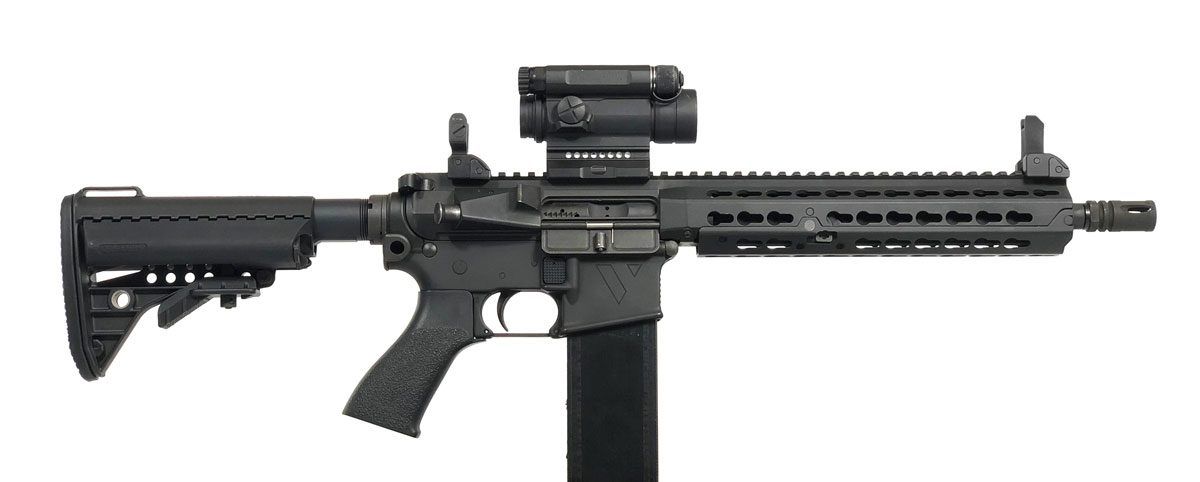
Q: Can you talk about your average builder out there and why they might consider using the A5?
Nick Wantland: Many people who build their own ARs overlook the buffer system in favor of spending money on other less important components. Builders should know that the buffer system is an extremely important part of the gun.
The current trend in the industry is to make barrels with insanely oversized gas ports, and then buy an expensive and intricate adjustable gas block to tame it down from the front end. Many of the guns that VLTOR makes and sell are duty weapons, so I mostly think in that context. And from that context, I’m not personally a fan of adjustable gas blocks. There are admittedly some that are way better than others, but I have seen many of them fail.
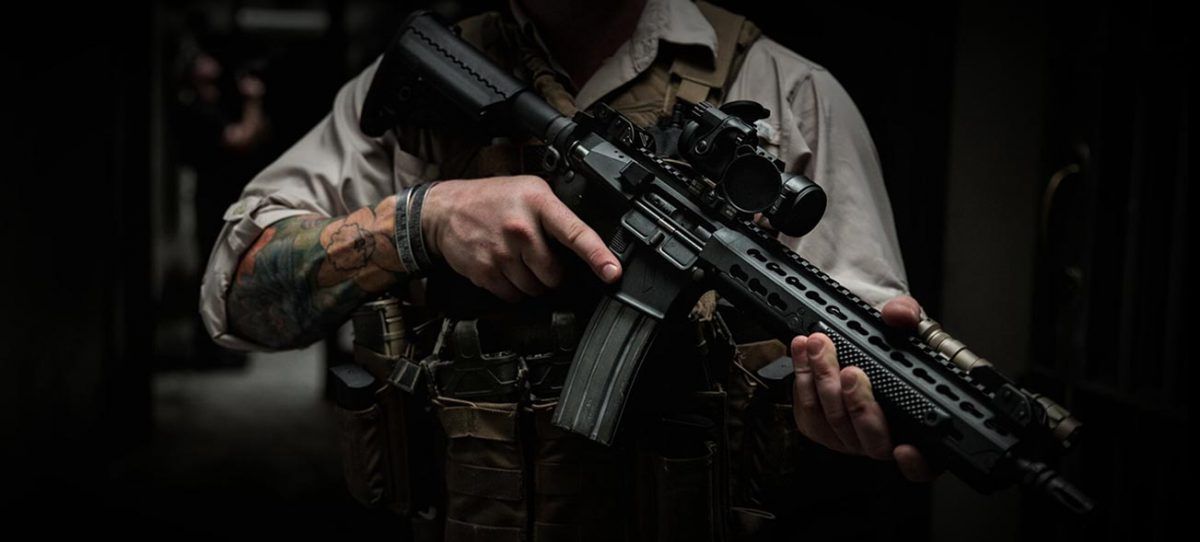
Retrofitting a useful and utterly reliable adjustable gas system into the package size of a low-pro AR gas block is hard to do well. Most of the guns with effective and trustworthy gas adjustment systems were designed around that criteria from the get-go, and sufficient space was provided to allow the use of more robust components.
Final Tuning on the Back End
For my purposes, I much prefer to pick a barrel with a properly spec’d port. I then do final tuning on the back end with buffer components. Rock solid, with no extra points of failure introduced. And the VLTOR A5 Buffer System system offers the best of all worlds when it comes to buffer options. It gives you the optimal spring rate, pre-load, buffer mass, and all the other great characteristics. All while allowing you to use a standard mil-spec collapsible stock.
I’ve heard it said in forums thousands of times… people will say that tossing a heavy buffer in the back of the gun is a band-aid fix. That can absolutely be true, especially if you don’t know what you’re doing and what you’re chasing…but it’s different with the A5 system due to the rifle action spring and the way that it functions. All things being equal, you’re able to run more mass in an A5 buffer than you could with a standard carbine buffer system. With A5, the gun actually prefers that mass, and can utilize it in a very beneficial way.
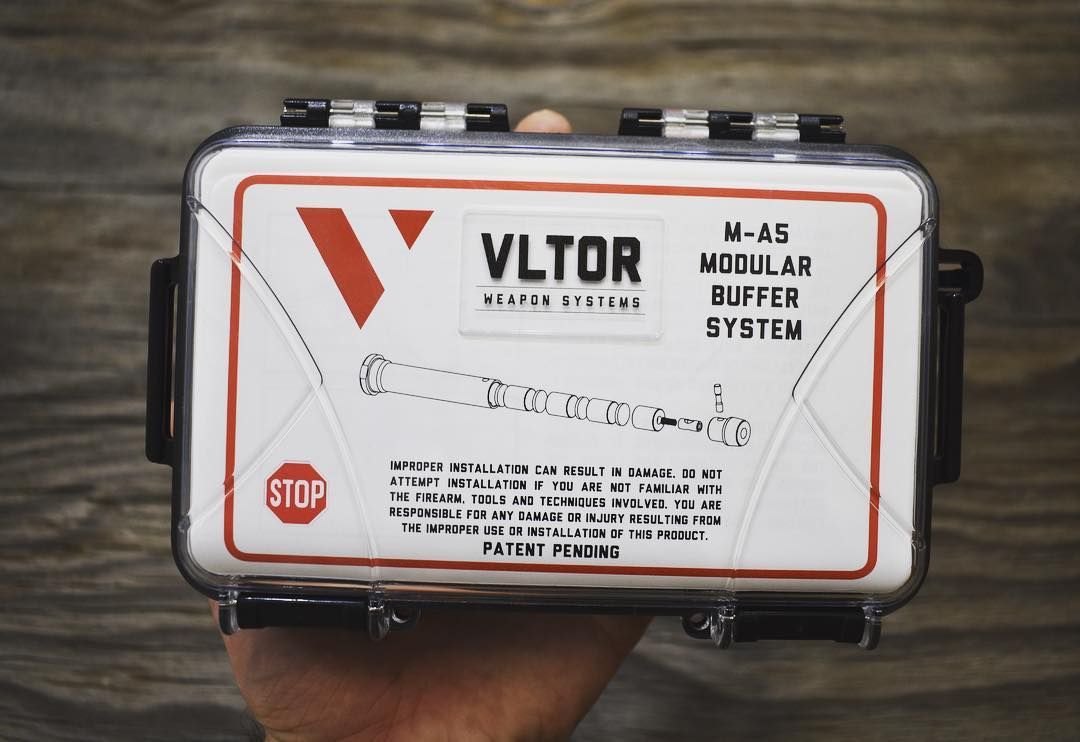
Return on Investment
It’s also worth noting the cost of the A5 components aren’t really much higher than carbine buffer components of comparable quality. If you price out a nice set of carbine buffer components from one of the big guys, full retail is around $80 for a carbine extension, carbine spring, and H2 buffer…Full retail on an A5 extension, A5 spring, and A5H2 buffer is right around $100. The return on that extra $20 investment is insane.
Q: Can you talk about the claim of decreased wear and tear with the VLTOR A5 Buffer System?
Nick Wantland: When you fire your AR, there’s a huge puzzle of physics happening in a short amount of time. We’re talking about parts that move extremely quickly, and events that take place in milliseconds. On an AR, the buffer system contributes greatly towards the timing of these various processes. The A5 system utilizes the rifle spring in a unique way that, compared to the standard rifle buffer setup, puts a bit more pre-load on the bolt carrier in its resting, in-battery position.
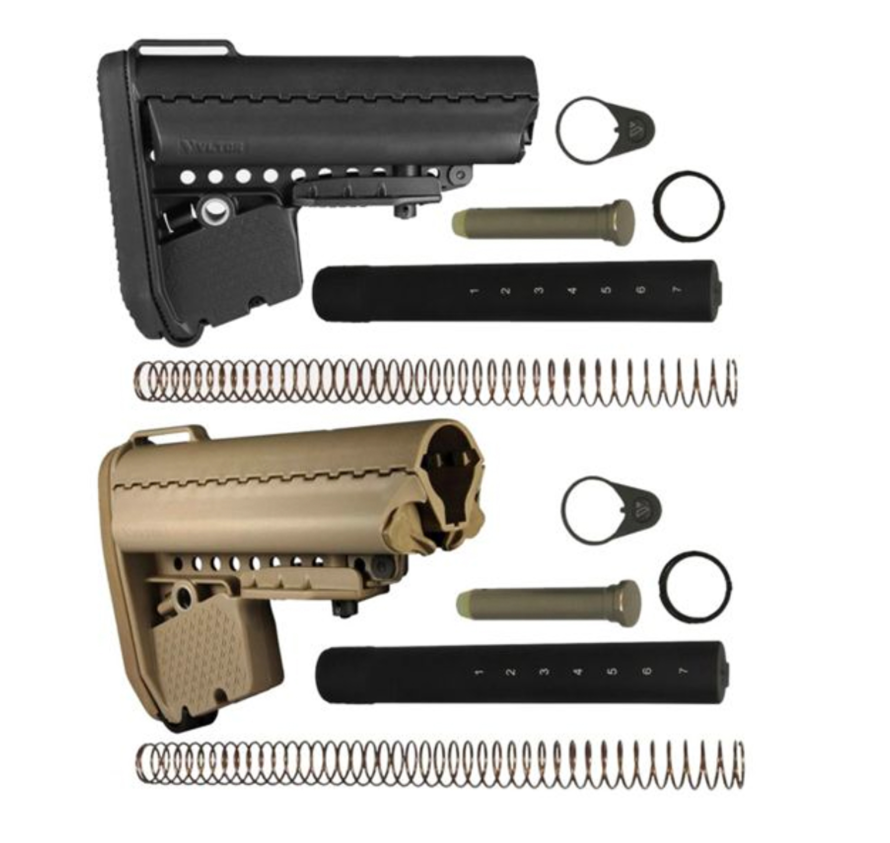
VLTOR Enhanced Modstock & A5 Buffer Kit – Mil-Spec
Calm and Graceful
This, along with the increased mass of the A5 buffers, delays the unlocking of the bolt. Keeping the bolt closed longer allows the system to depressurize more before the bolt begins to unlock and the cycling process begins. This reduced pressure makes pretty much every single process easier on the gun. Extraction is slowed and eased, carrier velocity is reduced and regulated, etc. Everything is just made much more calm and graceful. The gun isn’t trying to rip itself apart every time it cycles. It can save a lot of wear and tear on your components and increase their longevity.
Q: So, if we use the VLTOR A5 Buffer System, what can we expect to feel as an end-user?
Nick Wantland: It depends entirely on the user and the configuration of the gun. But in general, you will find that the recoil impulse is lessened – sometimes by a great degree. It just feels smoother, and a lot of people describe the feeling as the gun cycling “slower”. Most people also experience less dot bounce in their sight picture. A gun outfitted with the proper A5 components and a nice compensator can stay surprisingly still and level. We have tons of slow-mo footage of different guns doing this, even in full auto.
There is actually a joke going around that I absolutely love. You know how certain configurations have nicknames, like the 12.5” Kino configuration, etc? Some people call 14.5” mid-length builds with the VLTOR A5 Buffer System “Dylans” – because they are “hot fire.” It’s from the Chappelle’s Show skit, if you aren’t familiar. But they are just so incredibly soft and smooth. It’s surprising to some people when they first try it.
Q: Other interesting features you feel builders should know about?
Nick Wantland: One of the other unique features about the A5 buffers are their internal biasing springs. There’s a spring inside of each buffer that keeps internal weights stacked against the front face of the buffer. This assures that the weights are always in the same place when the gun starts its unlocking and cycling processes. Weights are always in the same position, so the gun is always overcoming the same mass, in the same way, every time.
Accuracy Improvement?
This adds consistency and repeatability to the system, and both of those characteristics are things that can contribute towards accuracy. I’m not saying that adding the VLTOR A5 Buffer System will make your gun more accurate. I cannot make claims of that sort because there are way too many variables involved. But we have internally seen some accuracy improvement on certain guns after swapping them over to A5. We have heard many outside anecdotal reports of it. We’ve definitely never seen a degradation.
Deadblow Effect
Despite weights being positionally biased inside, it’s done in a way that they still retain the cascading deadblow effect on the bolt upon closing. This is another reason why the A5 system is so effective at eliminating bolt bounce. This is especially important for full-auto applications.
If you’re really tall, or if you have super long arms, the A5 system can also be useful in that regard. Due to the longer A5 extension tube, you automatically gain ¾” of pull length over a carbine setup. If you combine that with a larger stock like our Emod, the total length-of-pull reaches something like 15.5” when fully extended.
Q: I’m seeing more manufacturers offer the VLTOR A5 Buffer System…I became very aware of it via Sons of Liberty Gun Works offering as an option on their builds.
Nick Wantland: A lot of manufacturers are running the VLTOR A5 Buffer System as their standard buffer system now, or at least offering it as a factory option. A5 buffers are going out on retail and contract guns all over the country. It’s actually starting to become a new industry standard in some circles, which is incredibly exciting to me. The A5 system has been out for a decade, but it’s just now starting to explode.
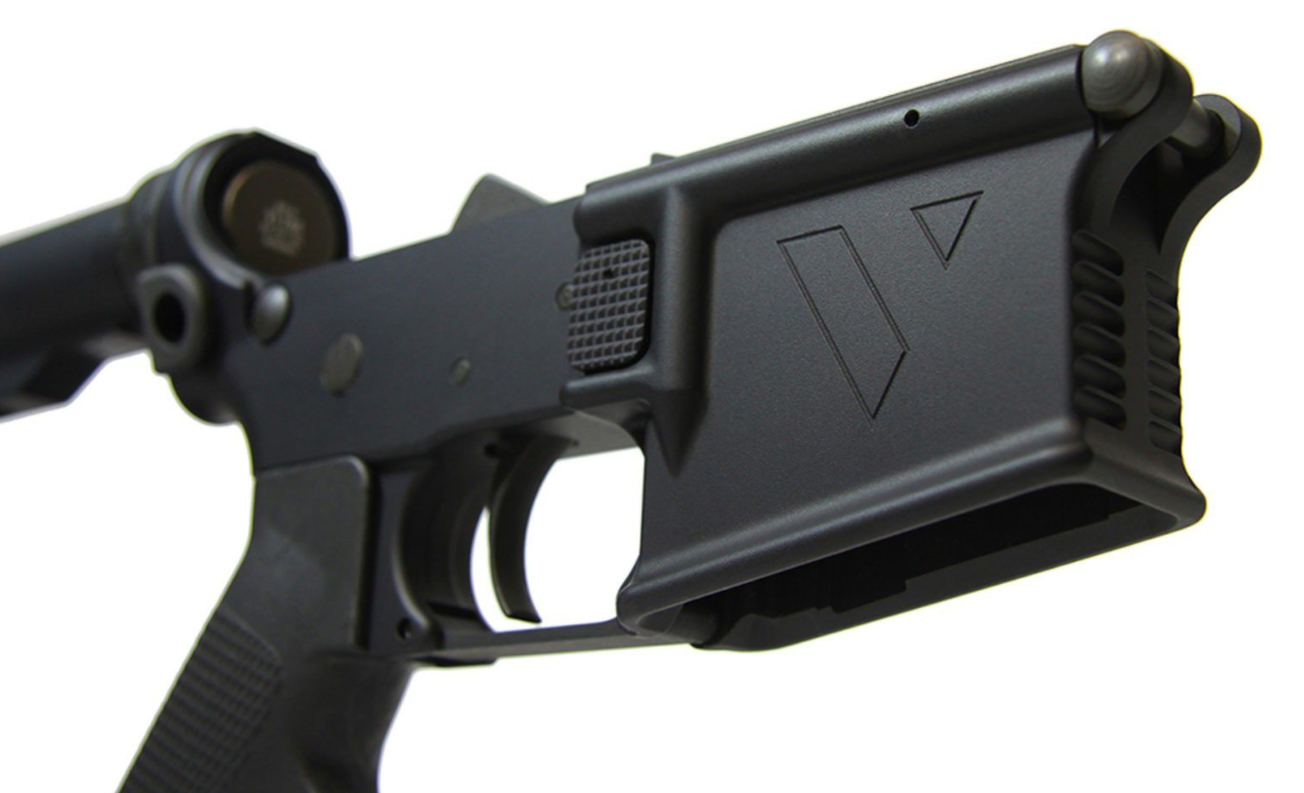
VLTOR VRA-RA5 Complete AR-15 A5 Lower Receiver Assembly
Much in the same way it took many years for people to catch on to the benefits of the mid-length gas system over the carbine gas system, it’s taken some time for the VLTOR A5 Buffer System to organically spread its wings. One of the reasons it took so long is that VLTOR has not really marketed this system at all. Its growth in popularity is based almost entirely on end-user tests and word of mouth. That makes it even that much more impressive and exciting to me.
Industry Accolades
Mike Mihalski from Sons of Liberty Gun Works called the A5 system “one of the most legitimate upgrades the carbine has ever seen.” Or something along those lines. Actually, I think he said that in the recent interview he did with you.
William Larson from Semper Paratus and Sionics is another guy who has been a big supporter of the system. There’s also another master of the AR realm, who I’ll leave unnamed, has gone as far as referring to the VLTOR A5 Buffer System as “cheating. He said it is basically like an “easy button” for gun tuning.
“If you follow my channel, you know that I’ve used the A5 system previously, and have been a big fan of it. And I am – it definitely helps. It’s basically a rifle length spring in an adjustable [receiver extension] tube, so it helps slow down the bolt over a longer period of time, and makes for a gentler recoil impulse. I don’t use them quite as much anymore, and the only reason is that I prefer to practice with mil-spec parts. That way, I don’t get too comfortable with a gun being so soft in recoil that when I go to a normal M4 I feel like it’s kicking too much. So I’ve kind of gone back to stock on a lot of parts. But the VLTOR A5 system is phenomenal.”
Garand Thumb
Bittersweet Endorsement
And then there’s Garand Thumb. In a recent video, he basically said he’s moving away from the A5 system because it’s so good…it spoils him and makes it difficult for him to revert back to his military issued guns that he’s not able to run it on. Sort of a bittersweet endorsement on that last one…
###
Tremendous thanks to Nick Wantland for taking time out of his schedule to help us with this article. For more information about the VLTOR A5 Buffer System, be sure to visit the VLTOR web site.
2 - 2Shares



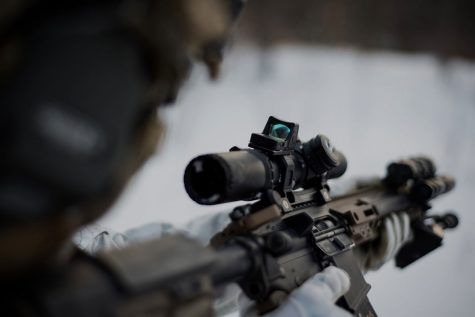
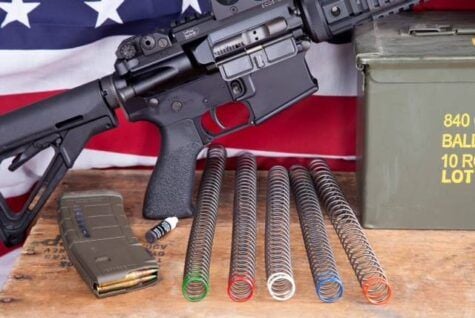
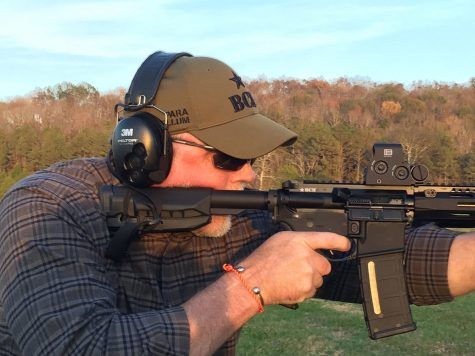
[…] Pretty straightforward, M4 style lower with Vltor A5 system (spring, buffer, 7 position tube) which is the heart of the concept as it is the one with the most merit as it is still on the market being used by various companies today like Bravo Company and Sons of Liberty Gunworks. A more in depth explanation of the system and its benefits can be found here: https://www.arbuildjunkie.com/vltor-a5-buffer-system-overview/ […]
Welp, you’ve sold me. I want an A5 to work with a Faxon 14.5″ midlength upper I’ve got. It’s currently just running on a rifle length spring and buffer tube, but I want a shorter length of pull than the 12.75″ that my Cav Arms stock affords for storage and sharing with my 5’2″ partner.
this popped up while i was trying to read the article. now i’ve lost my place
I’m doing a 20 inch barrel 6.5 Grendel build. I’m going with the A5, my question is what weight buffer should I get with this setup?
I have the exact same question. Also, does VLTOR offer a different receiver extension length for rifle length gas, or is the carbine length extension sufficient?
Seems like a good idea, but what I was looking for was some discussion on function with cartridges other than 5.56. Does it make a difference on a 20″ 6arc?
I’m building a DMR AR-15 in .223 Wylde with a 20″ barrel and my main questions are does the A5 buffer system pair well with light weight bolt carrier group and if so what is the best buffer weight and spring combo to use? And does the A5 system work well with adjustable gas blocks?
I’m about to build an M5/LR-308, DPMS Low-Profile platform, in .243 Win. Which of the A5 buffer weights would be appropriate for this rifle? 22” barrel, rifle length gas system.
Thanks!
SilencerCo’s high speed camera hooked to a computer test proved what Colt found out years ago..The heavier buffers effect on dwell time (bolt unlocking) is insignificant..What they (heavier buffers) do is effect the carrier velocity, which allows more time for the residual pressure to drop and allow more time for the case to relax before extraction called objuration..Different buffer spring weights can do the same thing..
When using the A5 adjustable tube, what’re the recommended spring and buffer configurations for typical.308 AR 20″ rifle and 14.5-16″ carbine configurations?